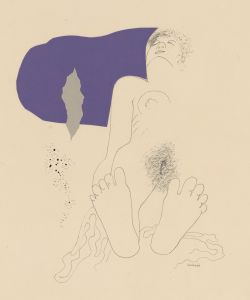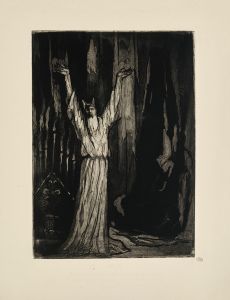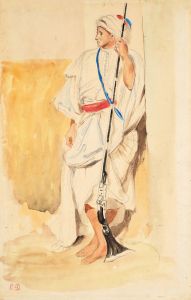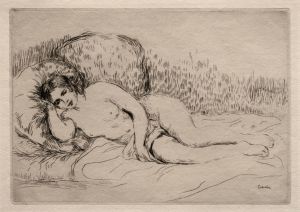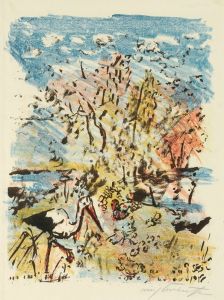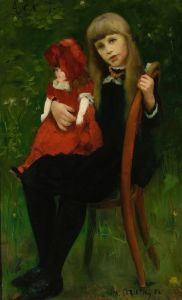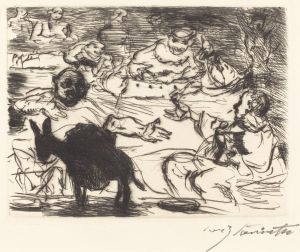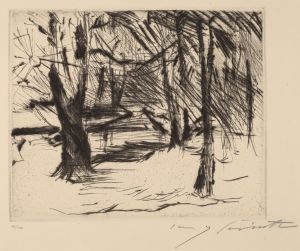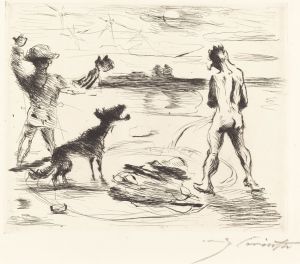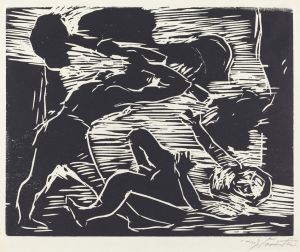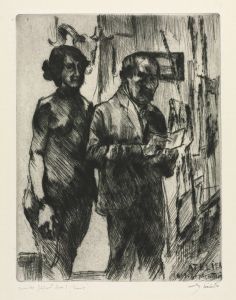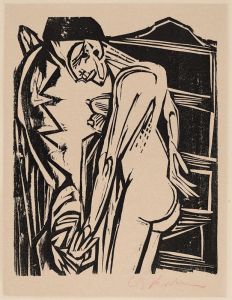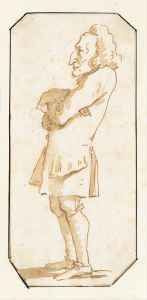
Stehender Akt
A hand-painted replica of Lovis Corinth’s masterpiece Stehender Akt, meticulously crafted by professional artists to capture the true essence of the original. Each piece is created with museum-quality canvas and rare mineral pigments, carefully painted by experienced artists with delicate brushstrokes and rich, layered colors to perfectly recreate the texture of the original artwork. Unlike machine-printed reproductions, this hand-painted version brings the painting to life, infused with the artist’s emotions and skill in every stroke. Whether for personal collection or home decoration, it instantly elevates the artistic atmosphere of any space.
"Stehender Akt" (Standing Nude) is a painting by the German artist Lovis Corinth, created in 1902. Corinth was a prominent figure in the German art scene during the late 19th and early 20th centuries, known for his contributions to the Impressionist and later Expressionist movements. His works often explored themes of human emotion, physicality, and the complexities of the human form.
"Stehender Akt" exemplifies Corinth's skill in depicting the human body with a sense of realism and vitality. The painting portrays a nude female figure standing in a relaxed yet confident pose. The model's body is rendered with a keen attention to anatomical detail, showcasing Corinth's deep understanding of human anatomy and his ability to convey the subtleties of light and shadow on the skin.
The composition of "Stehender Akt" is both simple and powerful. The figure is positioned centrally, dominating the canvas and drawing the viewer's eye directly to her form. Corinth's use of color is restrained yet effective, with a muted palette that emphasizes the natural tones of the human body. The background is minimally detailed, ensuring that the focus remains on the figure itself.
Lovis Corinth's approach to the nude was influenced by his academic training as well as his exposure to various artistic movements. He studied at the Academy of Fine Arts in Munich and later in Paris, where he was exposed to the works of the French Impressionists. This exposure is evident in his loose brushwork and the way he captures the play of light on the body. However, Corinth's work also carries a distinct emotional intensity that sets it apart from the more detached observations of the Impressionists.
"Stehender Akt" reflects Corinth's interest in the expressive potential of the human form. The model's pose is natural and unposed, suggesting a sense of ease and self-assurance. This contrasts with the more idealized and often static representations of the nude in classical art. Corinth's depiction is more immediate and personal, inviting the viewer to engage with the figure on a more intimate level.
Throughout his career, Corinth's work evolved, particularly after a stroke in 1911 that affected his ability to paint. Despite this, he continued to produce significant works, adapting his style to accommodate his physical limitations. "Stehender Akt" remains an important example of his early work, showcasing his technical skill and his ability to convey the human experience through art.
Lovis Corinth's contributions to art were recognized during his lifetime, and his works are held in high regard today. "Stehender Akt" is part of his legacy, illustrating his mastery of the nude form and his ability to infuse his subjects with a sense of life and presence. The painting is housed in various collections, including prominent museums and galleries, where it continues to be appreciated by art enthusiasts and scholars alike.





